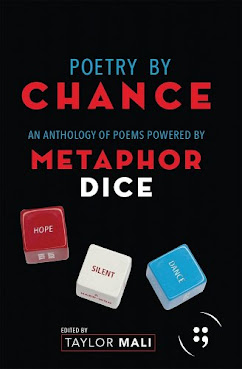Monday, August 9, 2010
The Five Minute Journal
Posted by
mary ann rodman
I've kept diaries/journals since third grade. Decades of journaling has left me with more notebooks and journals than I can count. As a third grader, I figured out writers have to practice, like I had to practice piano. Unlike piano practice, which felt like an hour chained to the piano bench, writing practice was nothing but fun. I wrote morning, noon and night, when I wasn't doing other things like oh, say, going to school, or later, going to work.
I got married. I kept journaling. I worked two jobs. I wrote during lunch and work breaks. Going a day without writing was like forgetting to brush your teeth. The world didn't end, but you had this feeling that something wasn't quite right.
Then I had a baby, and my world did cartwheels. Now I had a baby, two jobs and a husband who traveled. A lot. I was tired. A lot. I had read A Writer's Way. Julia Cameron's voice whispered in my ear
You're not journaling. Writers journal. Oh great. In addition to all the other things I fretted about, I coud add the voice of a woman I'd never met, nagging me to write.
I wanted to write. But now, even when I had a spare ten minutes, the words didn't come. My words were like stale bread; dry, tasteless, crumbling. No wait. Make that crummy. See, said my imaginary Julia, what happens if you don't journal.
But I couldn't do everything. If I only had an hour a day to write, I didn't want to spend it writing "Morning Pages." But I couldn't just sit down and write without some sort of warm-up. And without my journal I was finding it hard to generate new ideas, stay enthused about writing. I was a Writing Burnout, and I hadn't sold a single sentence. That was just sad.
When I began working with young writers, we discovered we had a mutual problem; journals. Me, because I had no time. The students were "victims" of a well-intentioned local curriculum that requires ten minutes of journaling first thing every morning, second through eighth grades. My students blanched at just the word journal.
So we stopped journaling. Now we observe and report.
We keep a large notebook, which is our log, but we carry with us a pocket size notebook for reporting. We have a standing assignment. Each day, my students and I record these three things.
1. Something that makes you stop and go "Hunh? I wonder what's up with that?"
2. An overheard piece of conversation that catches your ear. Yes, I encourage eavesdropping, but only in public places.
3. Something that makes a strong sensory impression.
That's it. They aren't supposed to do anything with it. They don't draw story webs or brainstorms ten ideas they write about. Just the facts ma'am.
Here are some examples of my students observations: a bright yellow Porsche parked in the driveway of a small shabby house with an unkempt yard. A person (sex undetermined) in full clownsuit mode---red wig, floppy shoes and all---waiting at bus stop in the middle of a weekday afternoon. An unused baby swimming pool, now swarming with tadpoles.
Overheard conversation include such memorable quotes as "Hey, you wanna piece of me?" "I am not leaving this bathroom until I find some mascara." "Peas do not belong in ears."
Strong sensory impressions ranged from "the pain of having your braces adjusted" to "our neighbors' noisy parties" to "the taste of Grandma's Pizza Potpie.
At the beginning of each session, I ask if anyone would like to share their observations. I never insist that someone share, but after hearing their friends observations, nearly everyone wants to share.
Sometimes, the image is so thought-provoking that the group will spontaneously brainstorm on their own. If it happens, cool. If it doesn't, see the five exercises below.
Writing Workout
1. Have the student choose one of their observations for a five-minute free write.
2. Using one of the observations, the student will write about it, using all five senses in the description.
3. Have the students choose one of their five senses. and write using only that sense. They are not allowed to choose sight as their sense.
4. The students write from their observations, this time using all the senses except sight.
5. Ninety-nine per cent of the time students write first person personal narratives. It's easier (I do it, too!) Assign each student a particular character (the snob, the mom, the little sister, etc) and have them write the piece again, this time from the point of view of their new character. They can still write in first person, but now they are writing as mom, or an orthodontist, or an older brother.
After each exercise, the students are then encouraged to share. When sharing generates enthusiasm resembling a pep rally. ("Hey why don't do you this?" "What if..." "And then he could..."), it's time to turn the hounds loose.
Typically, I only need to use one or two of these exercises before students leap from straight description, to a story or a poem.
My students come to a session, notebooks in hand, dying to "share." Little do they know that "share time" is a spring board to writing in their logs." I call it "expanding your observation."You could also call it journaling. I don't.
This process has also worked for me, the writer. Jotting down a couple of things to expand on later takes the pressure (and guilt) away. Julia Cameron is where she should be; between the covers of her books, and not in my head.
Posted by Mary Ann Rodman
I got married. I kept journaling. I worked two jobs. I wrote during lunch and work breaks. Going a day without writing was like forgetting to brush your teeth. The world didn't end, but you had this feeling that something wasn't quite right.
Then I had a baby, and my world did cartwheels. Now I had a baby, two jobs and a husband who traveled. A lot. I was tired. A lot. I had read A Writer's Way. Julia Cameron's voice whispered in my ear
You're not journaling. Writers journal. Oh great. In addition to all the other things I fretted about, I coud add the voice of a woman I'd never met, nagging me to write.
I wanted to write. But now, even when I had a spare ten minutes, the words didn't come. My words were like stale bread; dry, tasteless, crumbling. No wait. Make that crummy. See, said my imaginary Julia, what happens if you don't journal.
But I couldn't do everything. If I only had an hour a day to write, I didn't want to spend it writing "Morning Pages." But I couldn't just sit down and write without some sort of warm-up. And without my journal I was finding it hard to generate new ideas, stay enthused about writing. I was a Writing Burnout, and I hadn't sold a single sentence. That was just sad.
When I began working with young writers, we discovered we had a mutual problem; journals. Me, because I had no time. The students were "victims" of a well-intentioned local curriculum that requires ten minutes of journaling first thing every morning, second through eighth grades. My students blanched at just the word journal.
So we stopped journaling. Now we observe and report.
We keep a large notebook, which is our log, but we carry with us a pocket size notebook for reporting. We have a standing assignment. Each day, my students and I record these three things.
1. Something that makes you stop and go "Hunh? I wonder what's up with that?"
2. An overheard piece of conversation that catches your ear. Yes, I encourage eavesdropping, but only in public places.
3. Something that makes a strong sensory impression.
That's it. They aren't supposed to do anything with it. They don't draw story webs or brainstorms ten ideas they write about. Just the facts ma'am.
Here are some examples of my students observations: a bright yellow Porsche parked in the driveway of a small shabby house with an unkempt yard. A person (sex undetermined) in full clownsuit mode---red wig, floppy shoes and all---waiting at bus stop in the middle of a weekday afternoon. An unused baby swimming pool, now swarming with tadpoles.
Overheard conversation include such memorable quotes as "Hey, you wanna piece of me?" "I am not leaving this bathroom until I find some mascara." "Peas do not belong in ears."
Strong sensory impressions ranged from "the pain of having your braces adjusted" to "our neighbors' noisy parties" to "the taste of Grandma's Pizza Potpie.
At the beginning of each session, I ask if anyone would like to share their observations. I never insist that someone share, but after hearing their friends observations, nearly everyone wants to share.
Sometimes, the image is so thought-provoking that the group will spontaneously brainstorm on their own. If it happens, cool. If it doesn't, see the five exercises below.
Writing Workout
1. Have the student choose one of their observations for a five-minute free write.
2. Using one of the observations, the student will write about it, using all five senses in the description.
3. Have the students choose one of their five senses. and write using only that sense. They are not allowed to choose sight as their sense.
4. The students write from their observations, this time using all the senses except sight.
5. Ninety-nine per cent of the time students write first person personal narratives. It's easier (I do it, too!) Assign each student a particular character (the snob, the mom, the little sister, etc) and have them write the piece again, this time from the point of view of their new character. They can still write in first person, but now they are writing as mom, or an orthodontist, or an older brother.
After each exercise, the students are then encouraged to share. When sharing generates enthusiasm resembling a pep rally. ("Hey why don't do you this?" "What if..." "And then he could..."), it's time to turn the hounds loose.
Typically, I only need to use one or two of these exercises before students leap from straight description, to a story or a poem.
My students come to a session, notebooks in hand, dying to "share." Little do they know that "share time" is a spring board to writing in their logs." I call it "expanding your observation."You could also call it journaling. I don't.
This process has also worked for me, the writer. Jotting down a couple of things to expand on later takes the pressure (and guilt) away. Julia Cameron is where she should be; between the covers of her books, and not in my head.
Posted by Mary Ann Rodman
Subscribe to:
Post Comments (Atom)












2 comments:
Brilliant, I have put that into my journal notebook for when my school year starts. So often my students get stuck (like me) on what to write. This will help them sprinboard right into thier writing. This make me want to get back to school early. thanks for the tip
Great ideas, MA.
And I'm intrigued by "Grandma's Pizza Potpie." :-)
Post a Comment